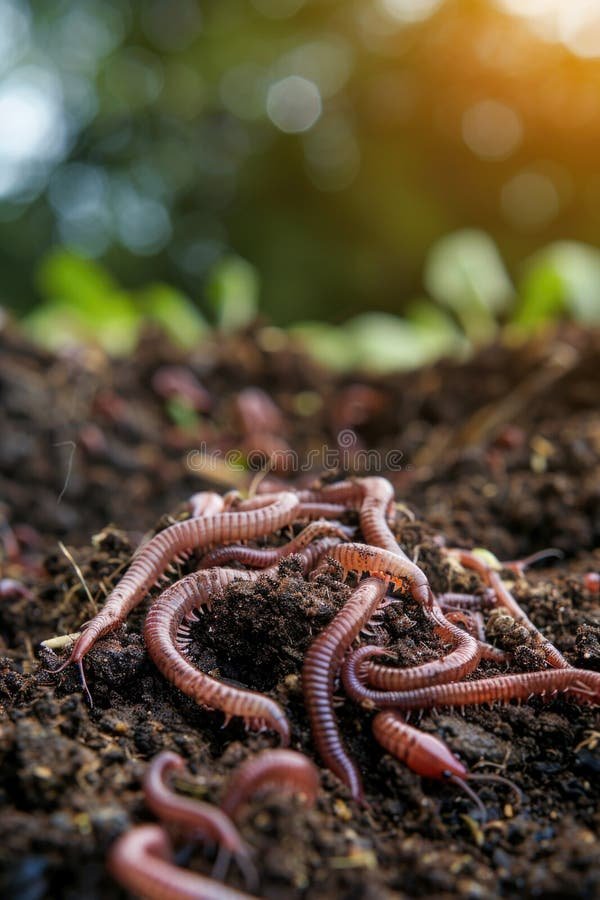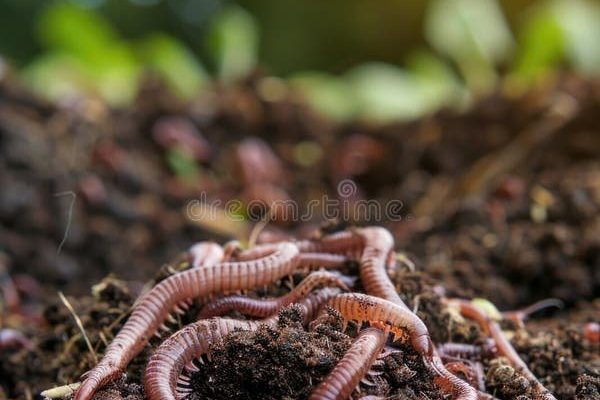
In the wild, red wigglers thrive in specific conditions that make their lives easier and more enjoyable. Understanding their habitat preferences helps anyone who wants to raise these worms—whether in a bin or the garden—create the best environment for them. Here’s the thing: it’s not just about dirt and darkness; it’s about the right mix of moisture, temperature, and food sources. So, let’s dig into the fascinating world of these little recyclers and see what makes them tick!
The Natural Habitat of Worm Bin Worms
Worm bin worms prefer environments that closely mimic their natural habitat. They usually dwell in rich, organic matter like compost heaps or decaying leaves. Think of them like tiny composting machines, breaking down waste and turning it into nutrient-rich soil. When in the wild, red wigglers are often found in:
- Woodlands: Among the damp, nutrient-rich leaf litter.
- Grasslands: Where the soil is well-aerated and moist.
- Gardens: Delicious decaying organic matter is abundant here.
The key to their environment? Moisture. Red wigglers thrive in damp soil, as it allows them to move freely and breathe through their skin. They can’t survive in overly dry conditions, much like how we wouldn’t want to be caught out in the desert without water.
Temperature Preferences
Temperature plays a huge role in where red wigglers like to live. In the wild, they typically prefer a cozy temperature range between 55°F and 77°F (about 13°C to 25°C). If it gets too hot or too cold, you might start to notice them become sluggish, just like you would on a hot summer day without AC.
In extreme conditions, these worms can either burrow deeper into the soil or go dormant until the climate becomes more favorable. However, if you’re raising red wigglers in a worm bin, you need to monitor the temperature closely. A drafty garage or a sunny windowsill can quickly alter the conditions and stress your worms out.
Soil Composition and Structure
You might not think of soil as a buffet, but to a worm, it’s a feast. The composition of soil matters greatly to these creatures. Red wigglers thrive in loamy, airy soil that’s rich in organic material. This type of soil allows them to move around easily and find the food they need.
So, what exactly should be in their soil? Here’s a quick list:
- Organic matter: This is crucial. Compost, decaying leaves, and kitchen scraps provide nutrients.
- Moisture content: Soil should be damp but not soaking wet—like a well-wrung sponge.
- Aeration: Worms need air, so ensure the soil is not compacted. They enjoy loose, crumbly dirt.
In their natural habitat, red wigglers are often found interfacing with the microbial community in the soil. It’s a bit like how we rely on friends and family to help us through life’s challenges. Microbes help break down organic material, making it easier for these little worms to munch on.
Feeding Habits in the Wild
Red wigglers are highly motivated by food, and their diet in the wild reflects that! They are primarily detritivores, which means they feed on decomposing organic material. This includes:
- Dead plants: Leaves, stems, and whole plants that have fallen and started to decompose.
- Animal waste: Yep, worms aren’t picky and will munch on manure, which is rich in nutrients.
- Food scraps: Naturally occurring scraps from fruits and vegetables that end up in their environment.
It’s interesting to note that they prefer food that is already broken down. This is where their role in the ecosystem shines. They help break down waste and recycle nutrients back into the soil, supporting plant growth. So you might say they are nature’s little recyclers, working tirelessly to keep the ecosystem healthy.
Moisture Levels: Their Lifeblood
As we discussed earlier, moisture is crucial for red wigglers. In their natural habitat, they seek out areas with high humidity. If the soil is too dry, worms can become desiccated and die. In fact, they can lose moisture so quickly that they start to shrivel, just like how we might feel after a long day in the sun without water.
To maintain their moisture needs, red wigglers will often be found in areas where it naturally collects moisture, such as near:
- Streams and rivers: These locations provide a more humid microclimate.
- Underneath rocks: The shade keeps the soil below cool and moist.
- Wetlands: These habitats are rich in organic debris and water.
You might be wondering how you can mimic these conditions in a worm bin. Keeping your bin covered but ventilated helps create a humid environment while allowing airflow. Spraying the contents lightly with water can also help maintain adequate moisture levels.
Common Challenges in Their Natural Habitat
Even in nature, red wigglers face challenges. Just like us, they have to dodge predators like birds and small mammals. They also deal with changing weather systems that can lead to flooding or drought.
When the soil becomes too acidic or has high salt levels—often due to human activities like over-fertilizing—these worms can struggle. They thrive in neutral conditions, so if their environment turns sour, it can lead to health issues or death.
Raising red wigglers in a worm bin means you have to keep an eye on these factors. If you notice a drop in worm activity, it might be a sign that their environment needs adjusting.
Understanding the habitat preferences of worm bin worms in the wild isn’t just interesting; it’s essential for anyone looking to raise them successfully. By mimicking their natural environment—considering factors like moisture, temperature, soil composition, and feeding habits—you can create a happy home for these worms.
Just like how a comfy chair helps you relax after a long day, providing the right habitat for your red wigglers will keep them thriving and happy. Remember, these tiny creatures play a big role in our ecosystem by breaking down waste and enriching the soil.
So, whether you’re a gardener looking to boost your soil or just curious about these remarkable little worms, applying this knowledge can lead you to success. Happy worming!

